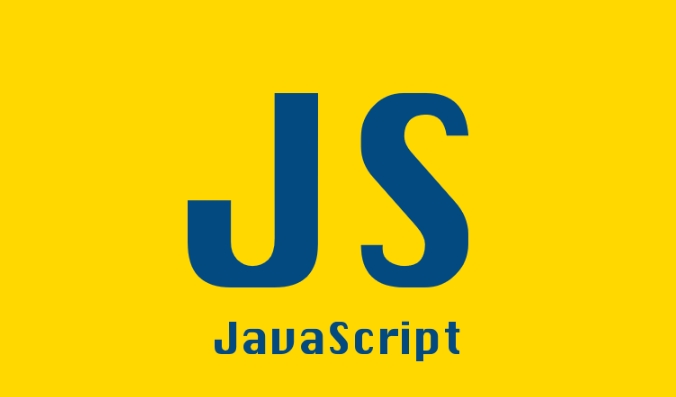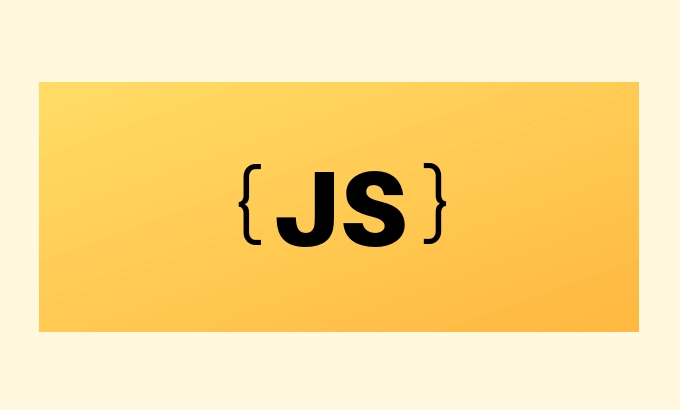 Web Front-end
Web Front-end
 JS Tutorial
JS Tutorial
 Advanced Debugging Techniques for Complex JavaScript Applications, utilizing Java Debugger Principles
Advanced Debugging Techniques for Complex JavaScript Applications, utilizing Java Debugger Principles
Advanced Debugging Techniques for Complex JavaScript Applications, utilizing Java Debugger Principles
Jul 17, 2025 am 01:42 AMDebugging complex JavaScript applications requires systematic use tools. 1. Set breakpoints and conditional breakpoints to intercept suspicious processes, such as before function entry, loop, asynchronous callback and filter according to conditions; 2. Enable Blackboxing function to block interference from third-party libraries; 3. Use debugger statements to control the debug entry in combination with environmental judgment; 4. Trace the call link through Call Stack, analyze the execution path and variable status, thereby efficiently locate the root cause of the problem.

Debugging complex JavaScript applications actually has many similarities with Java's debugging ideas, especially in large projects with clear structure and complex logic, console.log is far from enough. If you already have an understanding of basic debugging, but are still having a headache about "why this code is not executed" and "why the state suddenly changes", the following methods may help you locate the problem more efficiently.

1. Use breakpoint conditional breakpoints to accurately intercept suspicious processes
Chrome DevTools and VS Code both support setting breakpoints, which is the same as setting row breakpoints in Java using IntelliJ or Eclipse. The key is that you need to know where to set it, rather than just adding a bunch.
- Function entry : For example, a data processing function is called by multiple places, and I want to see which strange parameters are passed along.
- Loop or recursive internals : especially those where you may fall into a dead loop
- Before asynchronous callback : for example, statements after
.then()orawait. Sometimes you have to set a breakpoint to see the original data
Conditional Breakpoint is an advanced tool. For example, if you want to interrupt only when a variable value is equal to a specific content, right-click the breakpoint and enter the expression. For example:

user.id === 3
This will not be interrupted every time, saving time and avoiding interference.
2. Use the "Black Box Script" function to eliminate unrelated code interference
When your application relies on a large number of third-party libraries (React, Redux, Lodash, etc.), many times the stack information will be occupied by these codes, making it difficult for you to find where the logic you wrote.

At this time, you can use the Blackboxing function of DevTools to blacklist scripts that you don't care about, and the debugger will automatically skip the code in these files.
Operation path:
- Open DevTools → Sources → Right-click any script file → Add to blackbox
- Or go to Settings → Blackboxing to add matching rules (such as
*.min.js)
This is equivalent to selecting "Step Over Libraries" during Java debugging, allowing you to focus on your business logic.
3. Use debugger to match environment judgment and flexibly control the debug portal
Although many people are used to breaking points directly in DevTools, it will be more stable to write debugger statements in advance in some dynamic or lazy loading modules.
However, one thing to note: don't let debugger submit to production environment. You can control it based on environmental judgment:
if (process.env.NODE_ENV === 'development') {
debugger;
} This is safer than hardcoded debugger and is more suitable for teamwork. Just like the output can be controlled at the log level in Java, this is a "conscious" debugging method.
4. Make good use of Call Stack to analyze call links
Call Stack is a key tool for understanding the running path of a program. When you stop at a breakpoint, the Call Stack area on the left shows where the current execution context is coming here step by step.
- Click on any layer of stack frame to see the local variables and scope at that time
- If you find that a certain piece of logic has been called several times, this can help you quickly locate the source
- For event-driven code (such as React's onChange), Call Stack often reveals trigger paths you didn't expect
This is very similar to Java's thread stack analysis, and is especially useful when troubleshooting problems with asynchronous tasks or event listening.
Basically that's it. Although JavaScript does not have mature remote debugging mechanisms like Java, modern browsers and editors have provided a powerful enough toolchain. The key is to learn to use them systematically, rather than try your luck by typing logs randomly.
The above is the detailed content of Advanced Debugging Techniques for Complex JavaScript Applications, utilizing Java Debugger Principles. For more information, please follow other related articles on the PHP Chinese website!

Hot AI Tools

Undress AI Tool
Undress images for free

Undresser.AI Undress
AI-powered app for creating realistic nude photos

AI Clothes Remover
Online AI tool for removing clothes from photos.

Clothoff.io
AI clothes remover

Video Face Swap
Swap faces in any video effortlessly with our completely free AI face swap tool!

Hot Article

Hot Tools

Notepad++7.3.1
Easy-to-use and free code editor

SublimeText3 Chinese version
Chinese version, very easy to use

Zend Studio 13.0.1
Powerful PHP integrated development environment

Dreamweaver CS6
Visual web development tools

SublimeText3 Mac version
God-level code editing software (SublimeText3)
 How to make an HTTP request in Node.js?
Jul 13, 2025 am 02:18 AM
How to make an HTTP request in Node.js?
Jul 13, 2025 am 02:18 AM
There are three common ways to initiate HTTP requests in Node.js: use built-in modules, axios, and node-fetch. 1. Use the built-in http/https module without dependencies, which is suitable for basic scenarios, but requires manual processing of data stitching and error monitoring, such as using https.get() to obtain data or send POST requests through .write(); 2.axios is a third-party library based on Promise. It has concise syntax and powerful functions, supports async/await, automatic JSON conversion, interceptor, etc. It is recommended to simplify asynchronous request operations; 3.node-fetch provides a style similar to browser fetch, based on Promise and simple syntax
 JavaScript Data Types: Primitive vs Reference
Jul 13, 2025 am 02:43 AM
JavaScript Data Types: Primitive vs Reference
Jul 13, 2025 am 02:43 AM
JavaScript data types are divided into primitive types and reference types. Primitive types include string, number, boolean, null, undefined, and symbol. The values are immutable and copies are copied when assigning values, so they do not affect each other; reference types such as objects, arrays and functions store memory addresses, and variables pointing to the same object will affect each other. Typeof and instanceof can be used to determine types, but pay attention to the historical issues of typeofnull. Understanding these two types of differences can help write more stable and reliable code.
 JavaScript time object, someone builds an eactexe, faster website on Google Chrome, etc.
Jul 08, 2025 pm 02:27 PM
JavaScript time object, someone builds an eactexe, faster website on Google Chrome, etc.
Jul 08, 2025 pm 02:27 PM
Hello, JavaScript developers! Welcome to this week's JavaScript news! This week we will focus on: Oracle's trademark dispute with Deno, new JavaScript time objects are supported by browsers, Google Chrome updates, and some powerful developer tools. Let's get started! Oracle's trademark dispute with Deno Oracle's attempt to register a "JavaScript" trademark has caused controversy. Ryan Dahl, the creator of Node.js and Deno, has filed a petition to cancel the trademark, and he believes that JavaScript is an open standard and should not be used by Oracle
 Handling Promises: Chaining, Error Handling, and Promise Combinators in JavaScript
Jul 08, 2025 am 02:40 AM
Handling Promises: Chaining, Error Handling, and Promise Combinators in JavaScript
Jul 08, 2025 am 02:40 AM
Promise is the core mechanism for handling asynchronous operations in JavaScript. Understanding chain calls, error handling and combiners is the key to mastering their applications. 1. The chain call returns a new Promise through .then() to realize asynchronous process concatenation. Each .then() receives the previous result and can return a value or a Promise; 2. Error handling should use .catch() to catch exceptions to avoid silent failures, and can return the default value in catch to continue the process; 3. Combinators such as Promise.all() (successfully successful only after all success), Promise.race() (the first completion is returned) and Promise.allSettled() (waiting for all completions)
 What is the cache API and how is it used with Service Workers?
Jul 08, 2025 am 02:43 AM
What is the cache API and how is it used with Service Workers?
Jul 08, 2025 am 02:43 AM
CacheAPI is a tool provided by the browser to cache network requests, which is often used in conjunction with ServiceWorker to improve website performance and offline experience. 1. It allows developers to manually store resources such as scripts, style sheets, pictures, etc.; 2. It can match cache responses according to requests; 3. It supports deleting specific caches or clearing the entire cache; 4. It can implement cache priority or network priority strategies through ServiceWorker listening to fetch events; 5. It is often used for offline support, speed up repeated access speed, preloading key resources and background update content; 6. When using it, you need to pay attention to cache version control, storage restrictions and the difference from HTTP caching mechanism.
 JS roundup: a deep dive into the JavaScript event loop
Jul 08, 2025 am 02:24 AM
JS roundup: a deep dive into the JavaScript event loop
Jul 08, 2025 am 02:24 AM
JavaScript's event loop manages asynchronous operations by coordinating call stacks, WebAPIs, and task queues. 1. The call stack executes synchronous code, and when encountering asynchronous tasks, it is handed over to WebAPI for processing; 2. After the WebAPI completes the task in the background, it puts the callback into the corresponding queue (macro task or micro task); 3. The event loop checks whether the call stack is empty. If it is empty, the callback is taken out from the queue and pushed into the call stack for execution; 4. Micro tasks (such as Promise.then) take precedence over macro tasks (such as setTimeout); 5. Understanding the event loop helps to avoid blocking the main thread and optimize the code execution order.
 Understanding Event Bubbling and Capturing in JavaScript DOM events
Jul 08, 2025 am 02:36 AM
Understanding Event Bubbling and Capturing in JavaScript DOM events
Jul 08, 2025 am 02:36 AM
Event bubbles propagate from the target element outward to the ancestor node, while event capture propagates from the outer layer inward to the target element. 1. Event bubbles: After clicking the child element, the event triggers the listener of the parent element upwards in turn. For example, after clicking the button, it outputs Childclicked first, and then Parentclicked. 2. Event capture: Set the third parameter to true, so that the listener is executed in the capture stage, such as triggering the capture listener of the parent element before clicking the button. 3. Practical uses include unified management of child element events, interception preprocessing and performance optimization. 4. The DOM event stream is divided into three stages: capture, target and bubble, and the default listener is executed in the bubble stage.
 A JS roundup of higher-order functions beyond map and filter
Jul 10, 2025 am 11:41 AM
A JS roundup of higher-order functions beyond map and filter
Jul 10, 2025 am 11:41 AM
In JavaScript arrays, in addition to map and filter, there are other powerful and infrequently used methods. 1. Reduce can not only sum, but also count, group, flatten arrays, and build new structures; 2. Find and findIndex are used to find individual elements or indexes; 3.some and everything are used to determine whether conditions exist or all meet; 4.sort can be sorted but will change the original array; 5. Pay attention to copying the array when using it to avoid side effects. These methods make the code more concise and efficient.





